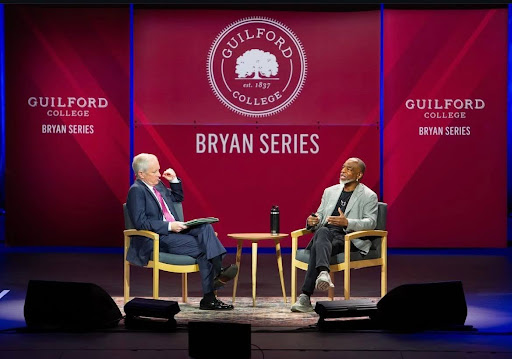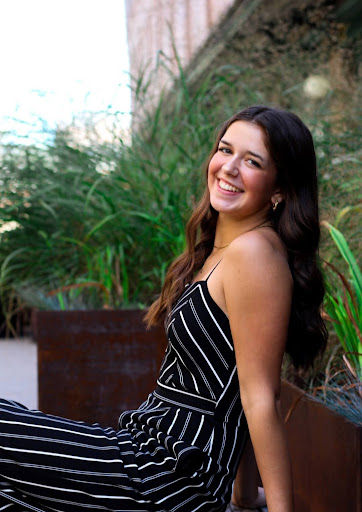A wave of fear was cast over Guilford College back in December when every detail of the current financial crisis finally reached the surface. It’s no longer a secret what Guilford is up against as the new board actively works to reach the goals set for them by the Southern Association of Colleges and Schools Commission on Colleges (SACSCOC). Yet, the burning question on everyone’s mind remains: Will Guilford still be standing when fall comes rolling around?
Since Jean Parvin Bordewich took over as acting president in January, she and the four board members have worked tirelessly to restore Guilford to a healthy financial status.
For the college to return to solid ground with its finances, they must make significant progress to meet multiple deadlines — starting with June 30, when they need to present SACSCOC with evidence of raising $5 million.
Bordewich said Guilford’s biggest hurdle so far has been the time they’ve had to work with since becoming aware of the financial situation over winter. “We didn’t really realize the gravity of the deficit in the situation until January when we started to try and rectify it,” said Bordewich. “It’s really hard to close a big deficit fast. If we had a year, not so hard. But we have five, six months.”
Despite the crunch to work at a fast pace, Bordewich is enthusiastic about the progress made. She hopes to raise the funds without having to sell off assets. Perhaps the most successful way she and the board have been able to stay on track was through the launch of the Good of Guilford campaign, which went into effect on March 1. The campaign’s goal is to raise the $5 million by June 31.
Bordewich said the college raised $400,000 in the first 10 days of the campaign. “It’s a good start,” said Bordewich. “It’s not $5 million, but it’s a start that gives me a lot of encouragement to keep going.”
Bordewich is also pleased with the college’s ability to cut expenses. “Frankly, a lot of our administrative structures and processes just weren’t working very well, so we’ve had to do a lot of things at once,” she said. “We’ve reduced the monthly expenses from about $3.1 to $2.4 million, a number of faculty have taken early retirement, and now the intensity of the Good of Guilford campaign has become a real money maker for us.”
Many students, alumni, faculty, and staff have expressed disappointment in Guilford for not addressing the situation earlier. It’s not a new arrival for the college, something that Bordewich acknowledges.
“We didn’t get off track yesterday,” Bordewich said. “All cards are on the table because we have to do a much deeper analysis of the college’s operations than has been done probably in decades.”
If the school is to meet the first deadline set by SACSCOC in June, the next step will be preparing for a visit in October.
“When they come in the fall, they’ll present what we have, tour the campus, and likely talk to students,” said Bordewich. “In addition to closing the gaps on the operating budgets, we also have to build up the portion of our endowment that’s unrestricted before we can reach the next point.”
Recovering all aspects of money has not been sunshine and rainbows, however. One of the reasons Guilford is in financial trouble is its relaxed standards for enforcing students to pay their bills. The college is strapped with about $1.75 million in unpaid student funds — about one-third of what Guilford is trying to raise.
“If there was a policy about paying before registering for classes, it wasn’t enforced,” Bordewich said. “We’ve had to examine what was happening, not just if there was a policy, and gradually install enforcement.”
Here’s the college’s gradual plan to recover unpaid bills:
If you’re a senior, you can’t graduate unless you have a zero balance. Returning students may not register with a balance of more than $1,000 come fall semester and must continue or find a payment plan to stick with. If students still owe the $1,000 from this outstanding year, they will have until November to pay it off. By January, students must have a zero balance.
Through it all, Bordewich remains true to her positive character. “I never thought I would be doing this, but I’m having so much fun,” she said. “I love Guilford, I love all the people, and I love all the idiosyncratic things about it. Every day, I find something else that’s interesting. It’s a wonderful community.”
For anyone stressed or worried, Bordewich offered a few words of advice. It wasn’t long ago that she remembered being in a situation where it felt like she was being led elsewhere from Guilford.
“I was at Guilford for two years before I left,” she said. “I wanted a major they didn’t offer here, and while the switch was great academically, I’m not sure it was the best experience for me. Nothing could compensate for the lack of community I was missing.”
Bordewich is hopeful that through fundraising efforts, mindful expense cuts and donations from alumni, Guilford can return to a healthy financial status.
“We all share that anxiety and that pain, and that’s helping us to fundraise,” she said. “I think we’ll be here come fall, and I hope that people will be happy enough here and challenged enough that they will make the commitment to stay, and we will stay to serve you.”








